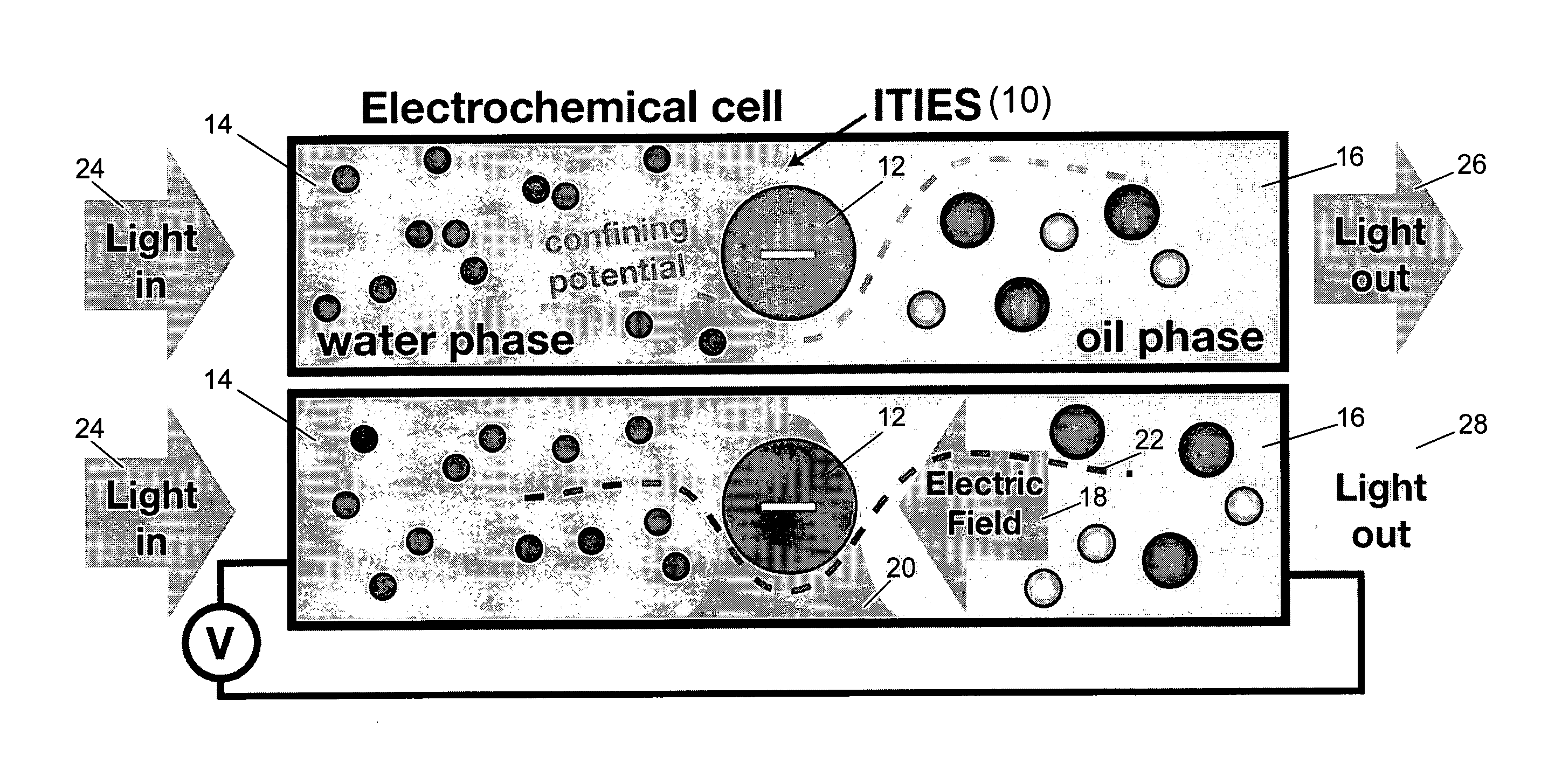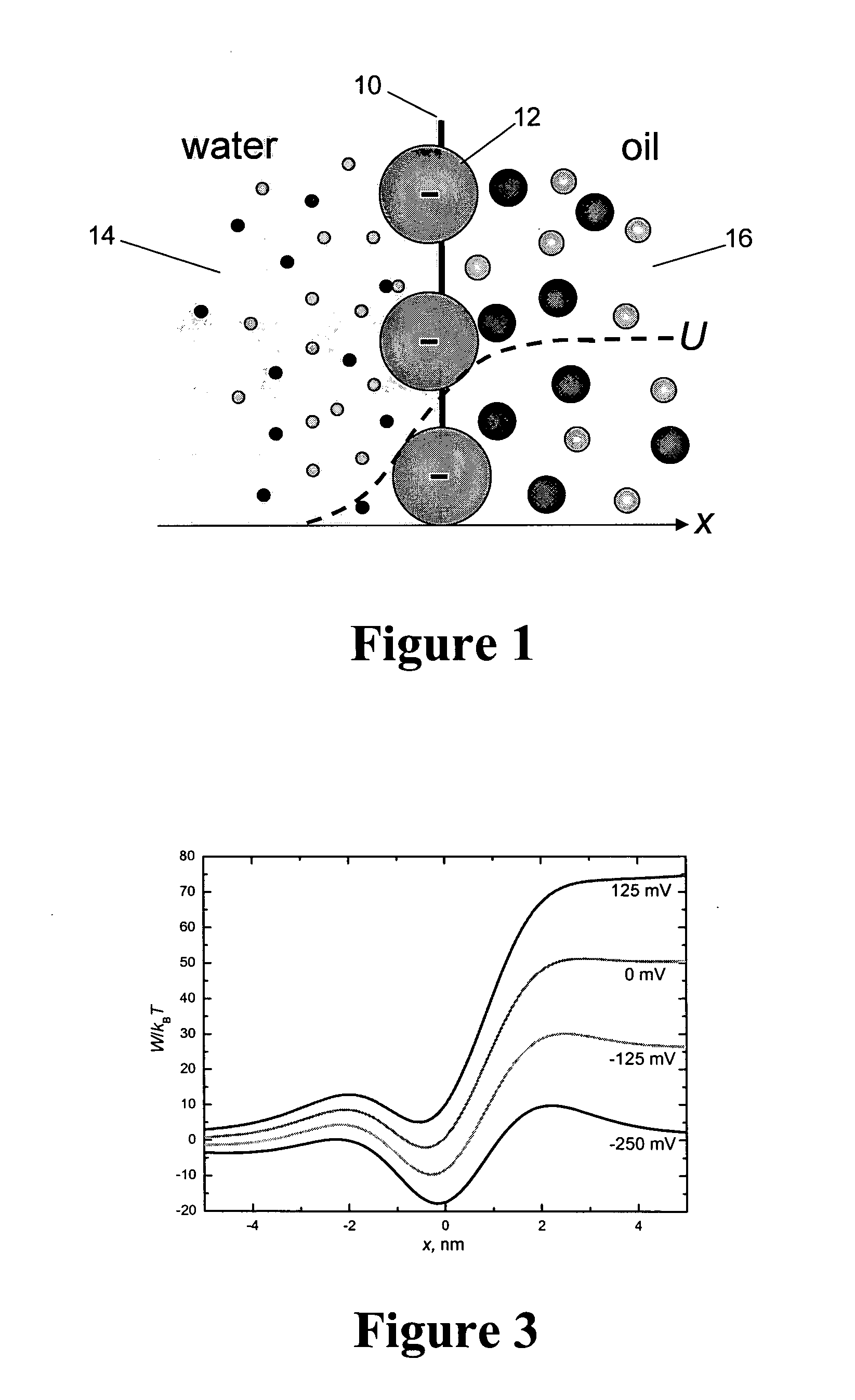Electrically-tunable optical devices
- Summary
- Abstract
- Description
- Claims
- Application Information
AI Technical Summary
Benefits of technology
Problems solved by technology
Method used
Image
Examples
Embodiment Construction
[0036]The present embodiments represent the best ways known to the applicants of putting the invention into practice. However, they are not the only ways in which this can be achieved.
[0037]As mentioned above, control of the fundamental absorption edge of a quantum dot with an applied electric field, through the Stark effect[2], has to date been limited by the electrical breakdown of the material surrounding the dot. However, we have found that fields greatly in excess of those possible in semiconductor materials can be applied at an Interface of Two Immiscible Electrolytic Solutions (ITIES) in an electrochemical cell[3,4]. Furthermore, nanoparticles can be reversibly localised at this interface through the application of an electric field, whereupon they self-assemble in a two-dimensional layer. Semiconductor nanocrystals localized at an ITIES should have optical properties tunable across much of the visible spectrum, corresponding to at least 560-620 nm wavelength (green to red) f...
PUM
 Login to View More
Login to View More Abstract
Description
Claims
Application Information
 Login to View More
Login to View More - R&D
- Intellectual Property
- Life Sciences
- Materials
- Tech Scout
- Unparalleled Data Quality
- Higher Quality Content
- 60% Fewer Hallucinations
Browse by: Latest US Patents, China's latest patents, Technical Efficacy Thesaurus, Application Domain, Technology Topic, Popular Technical Reports.
© 2025 PatSnap. All rights reserved.Legal|Privacy policy|Modern Slavery Act Transparency Statement|Sitemap|About US| Contact US: help@patsnap.com



